Snakes Of Cape Town
While the western cape is only home to around 42 species of snakes of which most are completely harmless and only half a dozen or so are considered to be dangerous and capable of inflicting a bite which would require serious medical attention.
With Cape Town being surrounded by wide open spaces of fynbos, mountains and parks snakes are often encountered. Another aspect is the ever expanding urban sprawl and development of wild areas for housing and business – causing human-snake interaction in the general area of Cape Town.
Be sure to also read Common Harmless Snakes of South Africa
Cape Cobra (Naja nivea) HIGHLY VENOMOUS
Africa’s most potent species of Cobra having a mainly neurotoxic venom with neurotoxic properties these snakes do not spit/spray their venom. Polyvalent anti-venom is used in the effective treatment of bites. The Cape Cobra is extremely common in the Western Parts of South Africa including Cape Town. Favouring drier arid environments as well as fynbos biomes including table mountain and surrounds. These snakes are highly variable in colour and can be bright yellow, yellow with black speckles, sandy brown, dark brown almost blackish and pale yellow almost grey in colour in some parts. Juveniles have a prominent black throat band which fades with age. Unlike most cobra species they are also well-known to have a black tail tip which is a key indicator between the Cape Cobra and Snouted Cobra.

Uniform Yellow variety of the Cape Cobra.
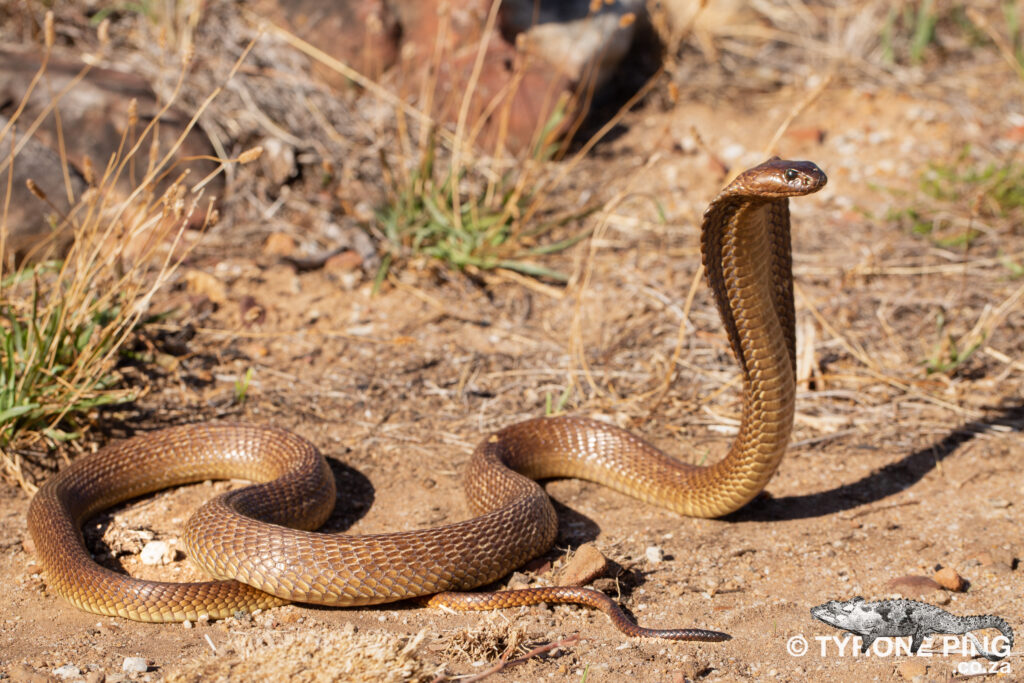
Plain brown variety of the Cape Cobra
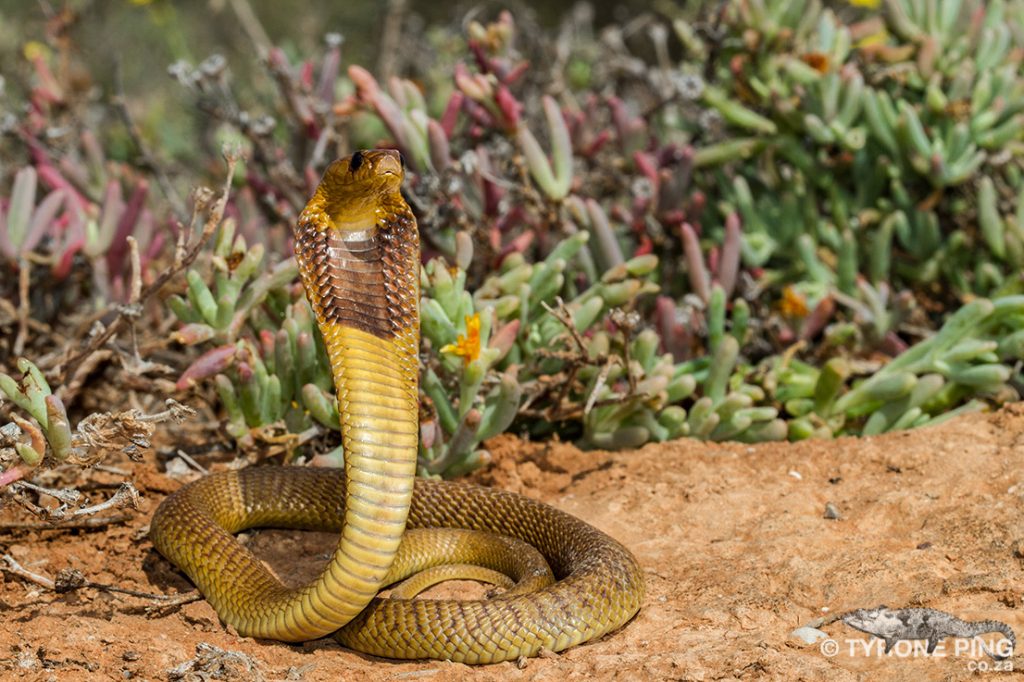
Juvenile Cape Cobra showing throat band.
Cape Boomslang (Dispholidus typus viridis) HIGHLY VENOMOUS
These snakes are strictly tree-dwelling animals and seldom venture down to the ground, with the exception being to feed or drink. They are one of the few snakes in Southern Africa that are sexually dimorphic (generally), meaning that the males and females feature different colouring. One of the few snake species which is generally sexually dimorphic, often the males are black and yellow, and the females dull brown/grey or olive. Juvenile snakes are brown/grey with speckles, and have a brilliant emerald-green eye. Averaging around 1.5m in length, Boomslangs can often reach close to 2m. These snakes rarely bite people, and are docile in nature. They possess a potent haemotoxic venom, for which there is an anti-venom available. It solely deals with bites from these snakes, and is called a monovalent anti-venom. There are no green Boomslang found in Cape Town.
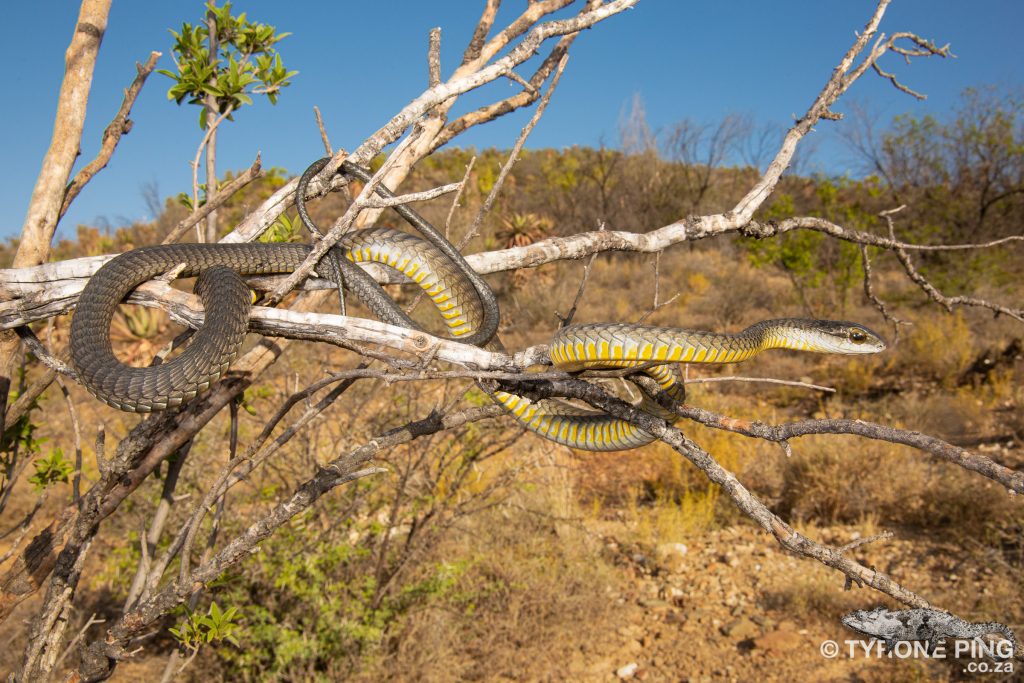
Typical Black and Yellow Male Boomslang

Typical Brown Female Boomslang
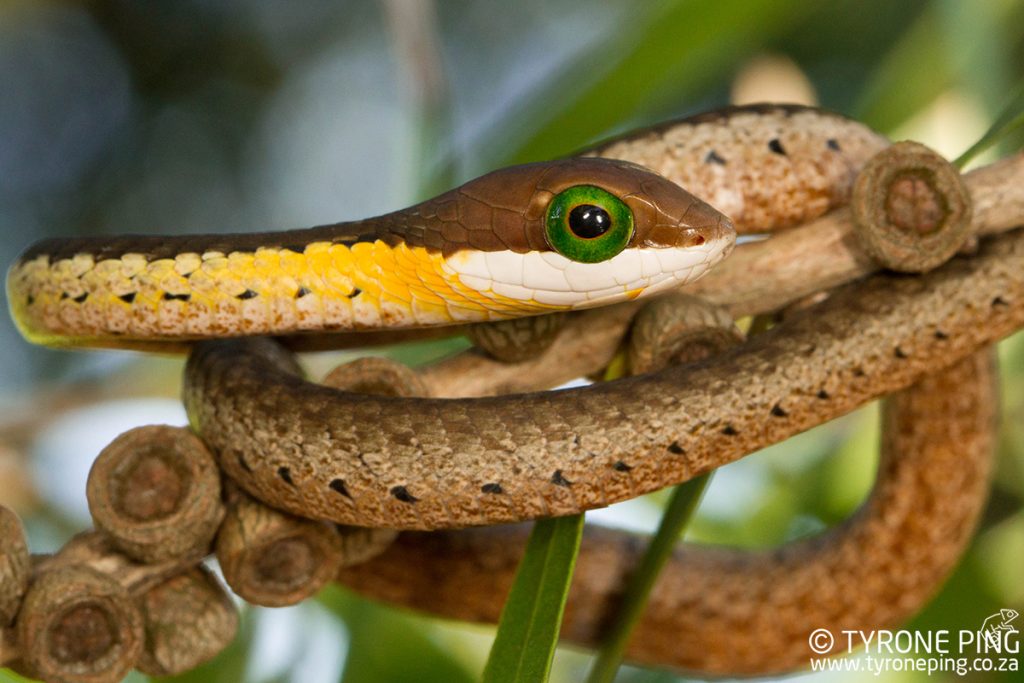
Juvenile Boomslang showing vibrant colours and emerald green eye
Puff Adder (Bitis arietans) – HIGHLY VENOMOUS
Probably South Africa’s most widely-spread, common venomous snake, the Puff Adder is relatively common in Cape Town and is often seen on hiking trails. The Puff Adder is a snake with excellent camouflage, and it prefers to sit and wait for opportunity when it comes to feeding. These snakes may remain in an ambush position for several weeks, waiting for a potential meal to pass by. They have a powerful cytotoxic venom which can lead to extreme pain, severe swelling, and blistering of the skin.

Vibrant Black and Yellow Puff Adder
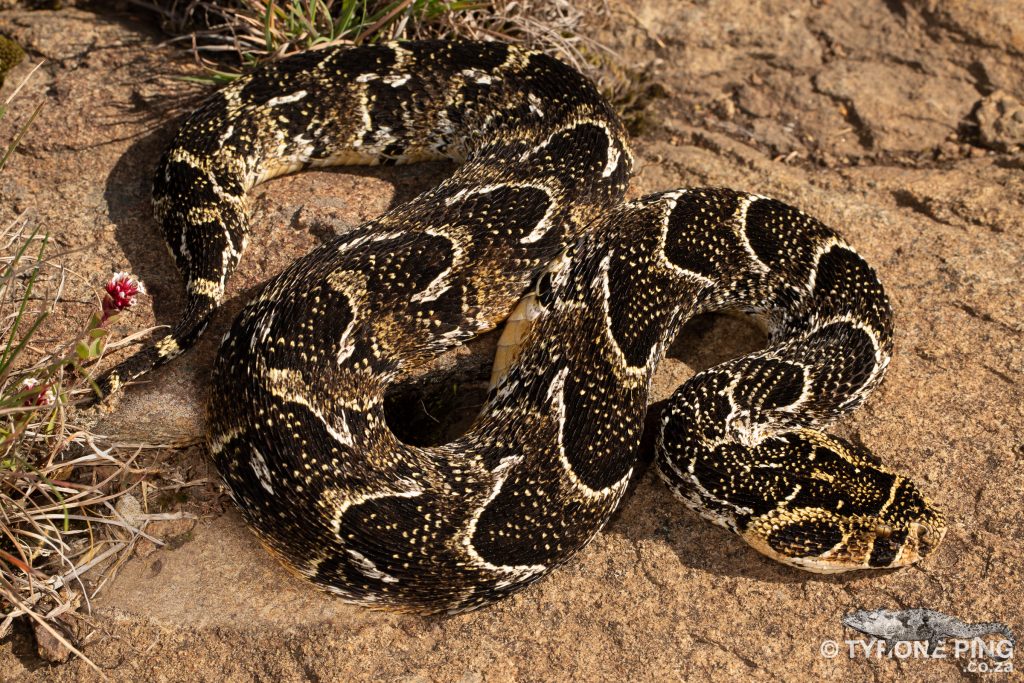
Darker Puff Adder
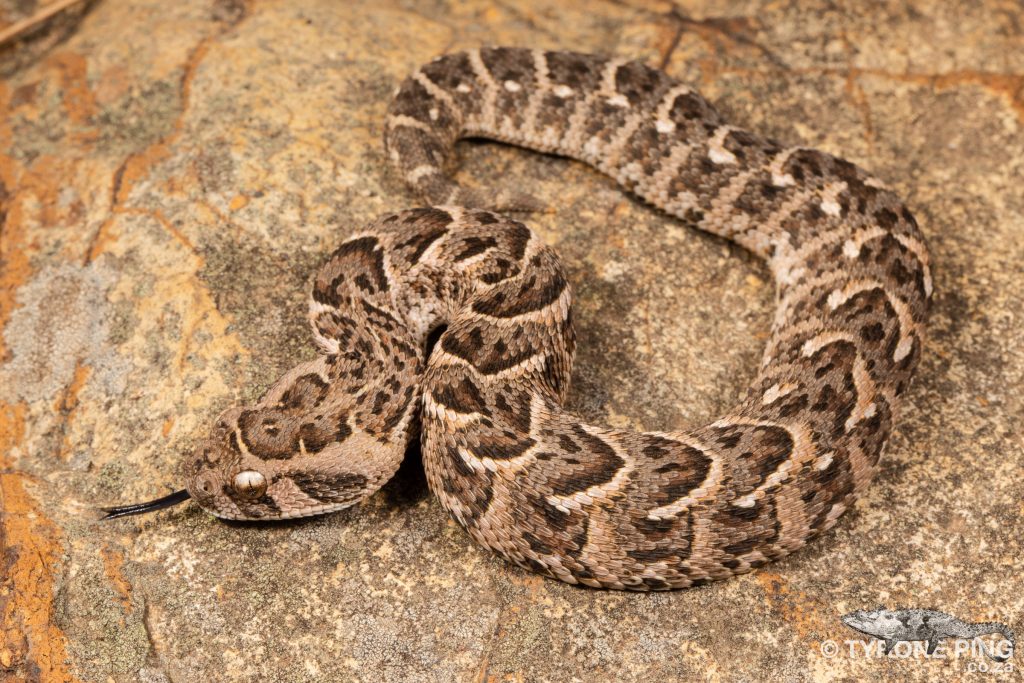
Pale Young Puff Adder
Berg Adder (Bitis atropos) HIGHLY VENOMOUS
Averaging 30 cm but specimens may reach 60 cm.
A short stocky snake, which ranges in colours from charcoal black, with a number of lighter or darker patches along the back. These snakes have a short temper that will hiss and struck out violently when accosted. There are more or less three distinctive populations of Berg Adders in South Africa. Typically favouring rocky high altitude montane regions associated with grasslands in the East, although in the Eastern and Western Cape they may be found at sea level. Often sheltering under rocks and beneath grass tussocks, commonly seen basking on hiking paths on table Mountain. Bites are uncommon and the venom seems to have largely neurotoxic properties which in some cases may cause prolonged effects on the senses. Affecting sense of smell, taste and sight in extreme cases. Like most dwarf adders they are heavily collected for the illegal pet trade both locally and internationally. Anti-venom Is not used nor effective in the treatment of these bites.
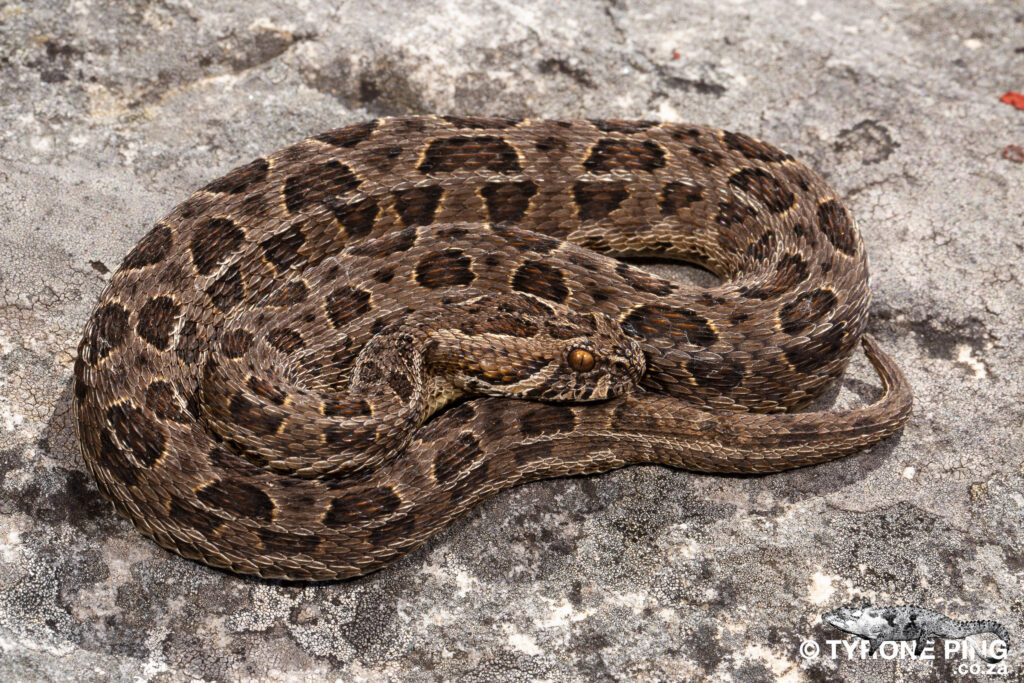
Typical Cape Berg Adder
Coral Snake (Aspidelaps lubricus lubricus) VENOMOUS
An attractive nocturnal snake that is seldom seen during the day although may move across warm roads on summer evenings. Often seen in the wine-lands and northern suburbs where it may enter homes and businesses on the edge of lesser build up area’s. When accosted this snakes with immediately raise up and spread a small narrow hood, hissing and striking out repeatedly to ward off its attackers. While not known to be lethal these small snakes who seldom reach over 60cm should be treated with caution as their neurotoxic bites may cause some complications.

Coral Snake in typical defensive posture.
Spotted Harlequin Snake (Homoroselaps lacteus) VENOMOUS
A beautiful coloured wirey snake. Preferring to shelter under rocks, logs and old termitaria where it feeds largely on Cape Legless Skinks and Slug Eaters. When encountered they wriggle and vigorously often shoot down the nearest hole to evade capture.
They may be confused with the harmless Aurora House Snake that both show a prominent yellow/orange dorsal stripe. These small slender snakes are underestimated by many and are often handled freely and thought due to their small size and restricted gape cannot easily bite and the effects mentioned to be “mild” however recent cases prove bites to be extremely uncomfortable and handling should be avoided.
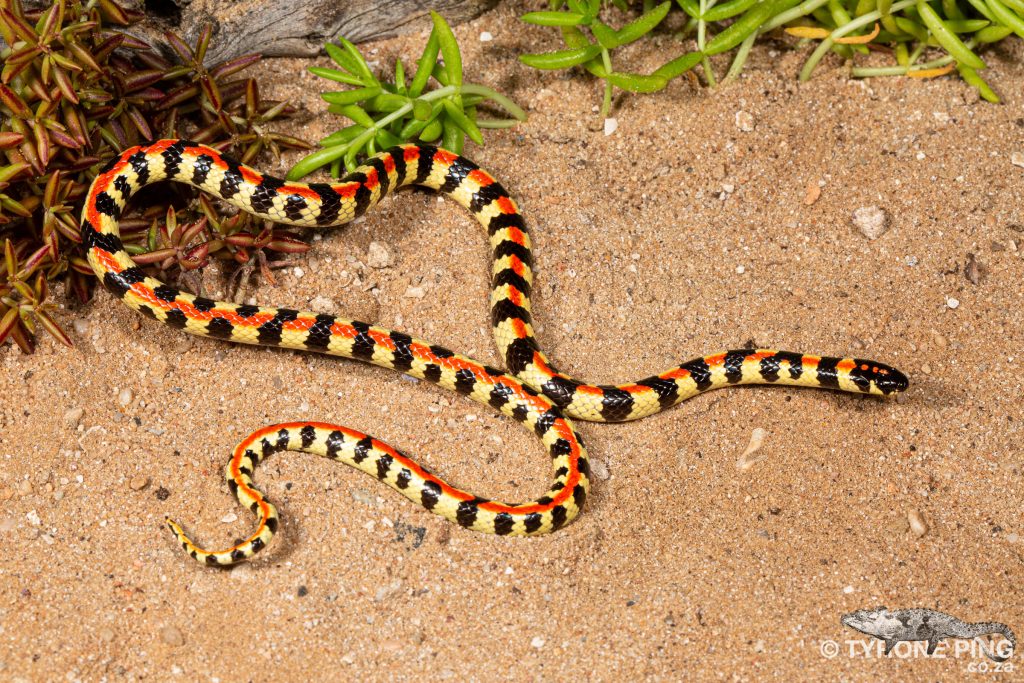
Beautiful colours of the Spotted Harlequin Snake
Karoo Sand Snake (Psammophis notostictus) – Venomous not medically significant.
A common snake found throughout most of the arid regions of the Western Cape. A fast moving snake which is often active during the hottest part of the day where it actively chases down prey. Often seen crossing roads subsequently many are killed. Like the other Sand/Grass snakes mentioned above they have a mild venom and will not hesitate to bite when handled. Bites are superficially and mild itchiness and swelling may occur in some cases.
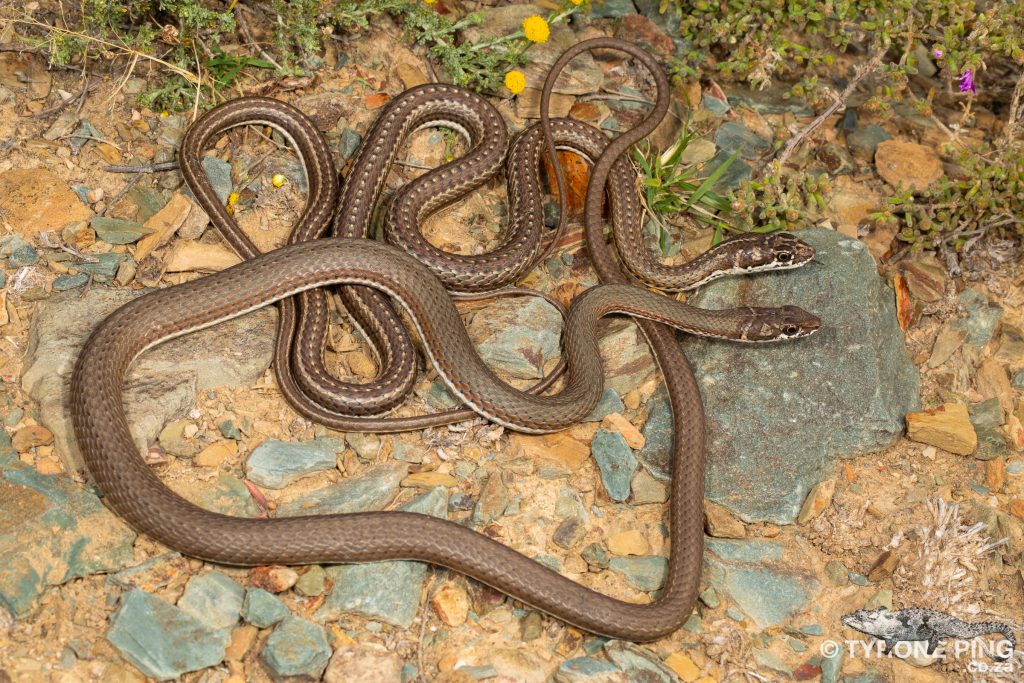
Two forms of the Karoo Sand Snake
Cross Marked Grass Snake (Psammophis crucifer) – Venomous not medically significant.
A vividly marked snake often found moving swiftly in grasslands and mountainous fynbos often mistaken for the Spotted Grass Snake or Karoo Sand Snake. They are quick to move off once disturbed but will often freeze as soon as they enter cover and come to a dead stop and use their excellent camouflage to avoid detection.
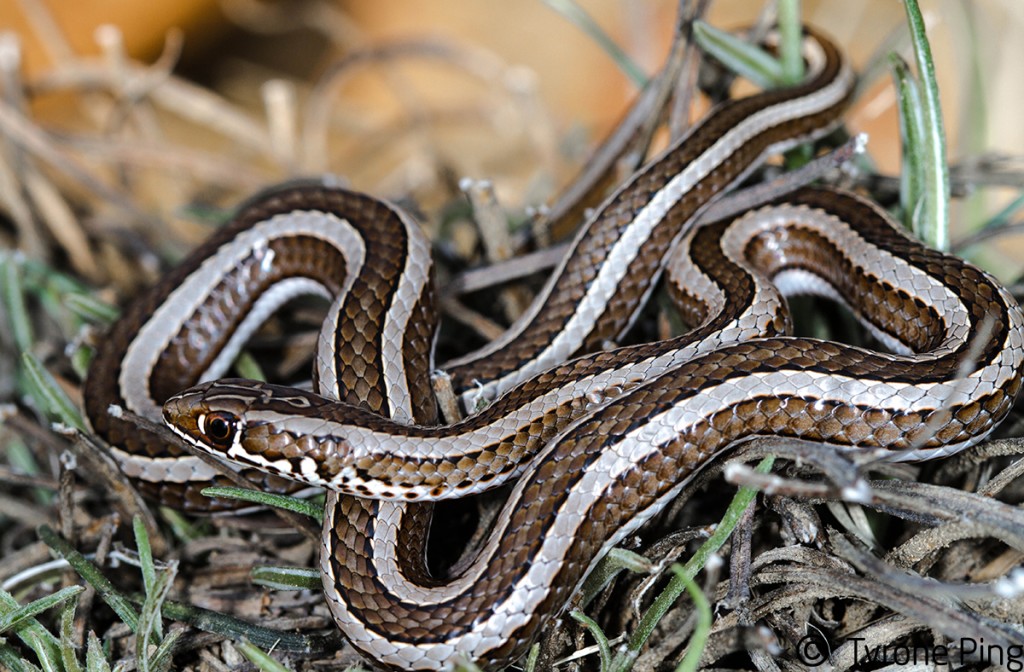
Beautify marked Cross Marked Grass Snake.
Rhombic or Spotted Grass Snake (Psammophylax rhombeatus) – Venomous – not medically significant.
A misleading common name “Skaapsteker”, these snakes got a bad wrap from the original sheep farmers in the Karoo who upon discovering dead livestock thought to be attributed to snake bite would find these snakes commonly in the paddocks. It is more likely such deadstock would be attributed to the Cape Cobra. A fast moving snake common in grasslands, fynbos and montane environments where it preys on small rodents and lizards. They bite readily when handled and bites will often bleed freely for a few minutes – there is much thought behind the anticoagulant properties in the venom.
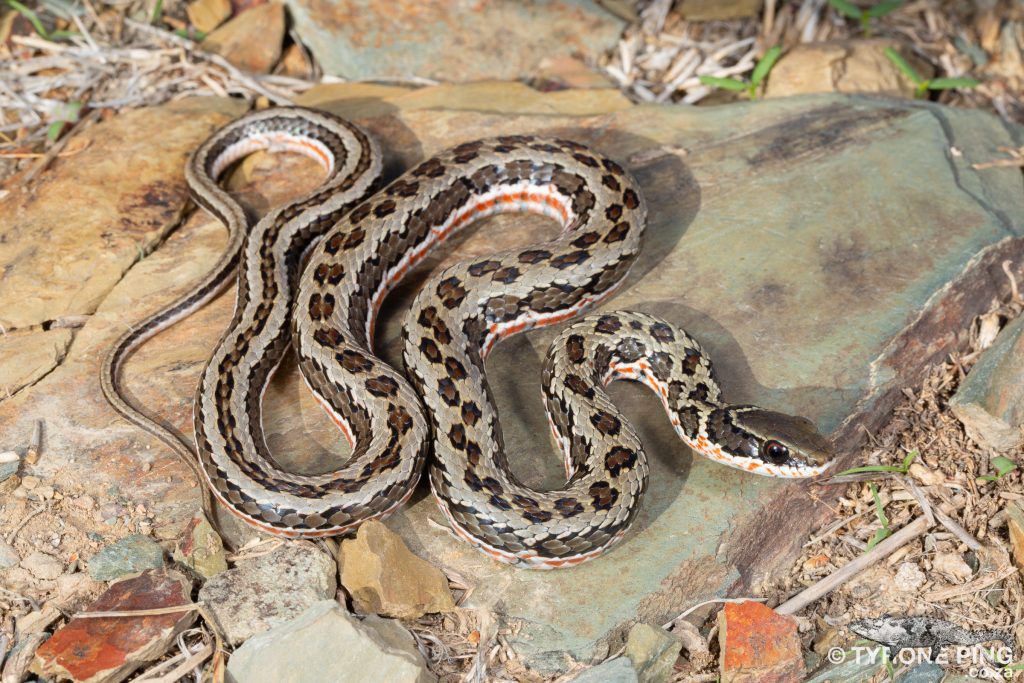
Boldly patterned Spotted Grass Snake.
Herald Snake (Crotaphopeltis hotamboeia) – Venomous – not medically significant.
Another prolific snake found across most of South Africa occurring in all 9 provinces. A variable snake which may have bright orange/red, white, yellow or black colouration on the upper lip adding to its common name of the Red-Lipped or Herald Snake. Primarily a frog feeder but are known to take geckos and small lizards. Favouring damp localities these snakes are a common sight in suburban gardens amongst garden ponds and water features.
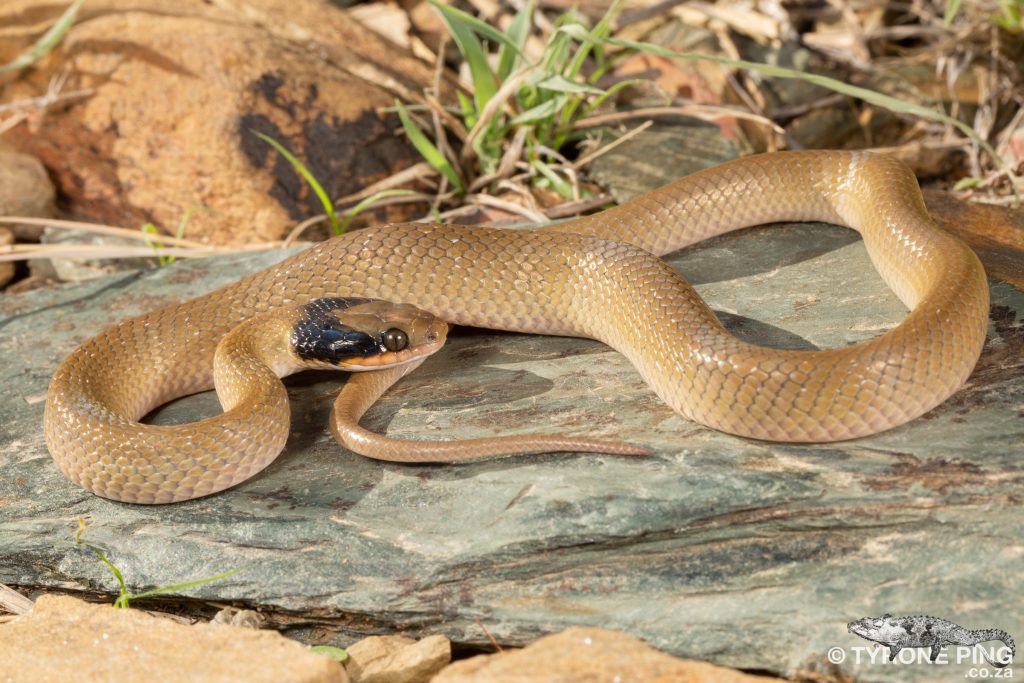
Herald Snake showing typically dark head.
Mole Snake (Pseudaspis cana) – Non Venomous
A highly successful snake that is most common in the Western Cape. These snakes come in a wide variety of colours from brown to pitch black on the West Coast,. As juveniles they are heavily patterned but these patterns typically fade with age. A robust powerful constrictor that has gotten a bad reputation on social media. These snakes will hiss and lunge out in attempts to bite but seldom hit their target, in some areas these snakes reach close to 2 m in length. They feed largely on rodents which are actively sought after in their burrows but birds and lizards are readily taken.
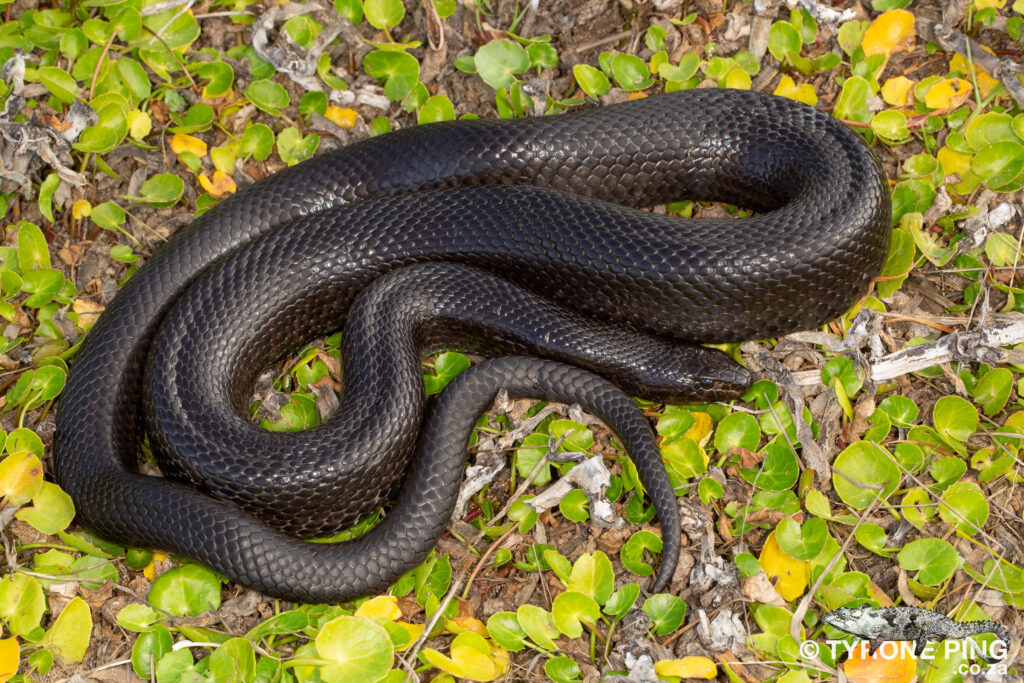
Typical adult colouration of the Mole Snake.
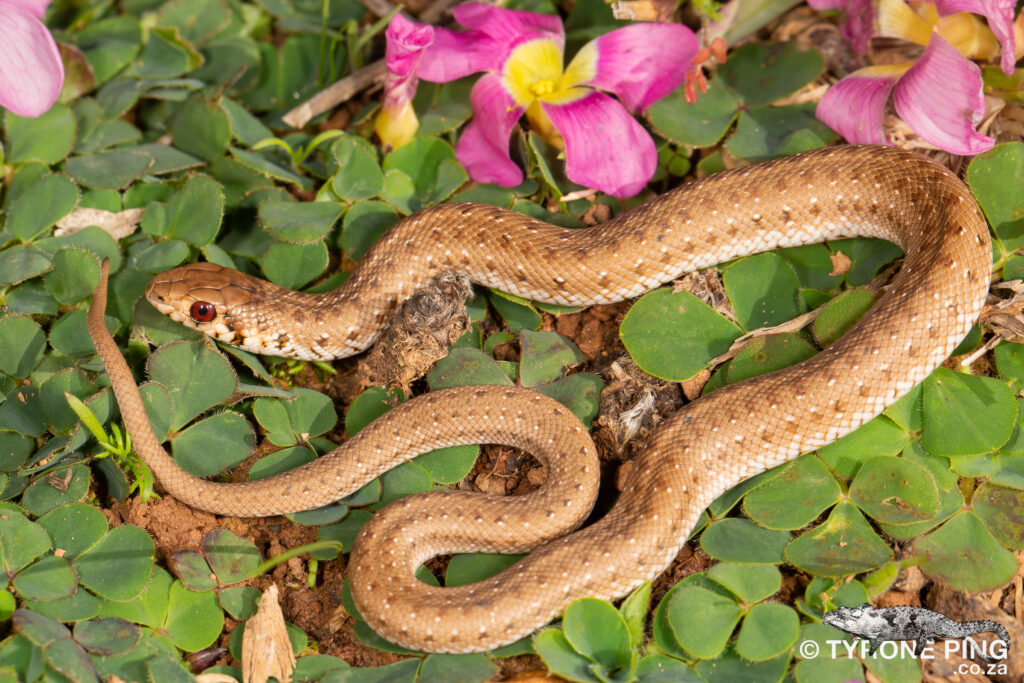
Typical juvenile colouration of the Mole Snake.
Rhombic Egg Eater (Dasypeltis scabra) – Harmless
Along with the Brown house Snake the Rhombic Egg Eater can be found just about anywhere in South Africa. From the arid regions in the West, the coastal forests in the Eastern half of country, grasslands and montane fynbos. These snakes feed exclusively on birds eggs and can go many months without a meal when the birding season comes to an end. Being virtually defenceless these snakes put up an impressive threat display by rapidly rubbing its scales together coiling and uncoiling which produces a rasping sound. These snakes average around 50-60cm but can reach over 1 m in certain areas large enough to consume an adult chicken egg.

Patterns and V shape marking behind the head of the Rhombic Egg Eater.
Brown House Snake – Harmless
Arguably one of the most common and widespread snakes in South Africa. Easily distinguishable by the two white lines running down the side of the head. These snakes can be found in almost every environment from suburban gardens, forests and fynbos. Excellent at pest extermination, these snakes feeding mainly on rats, mice, lizards, birds and even bats have been recorded as prey. When first caught they may bite and strike out readily which may draw blood but only superficial bite marks. A commonly kept pet snake by many amateur snake enthusiasts.
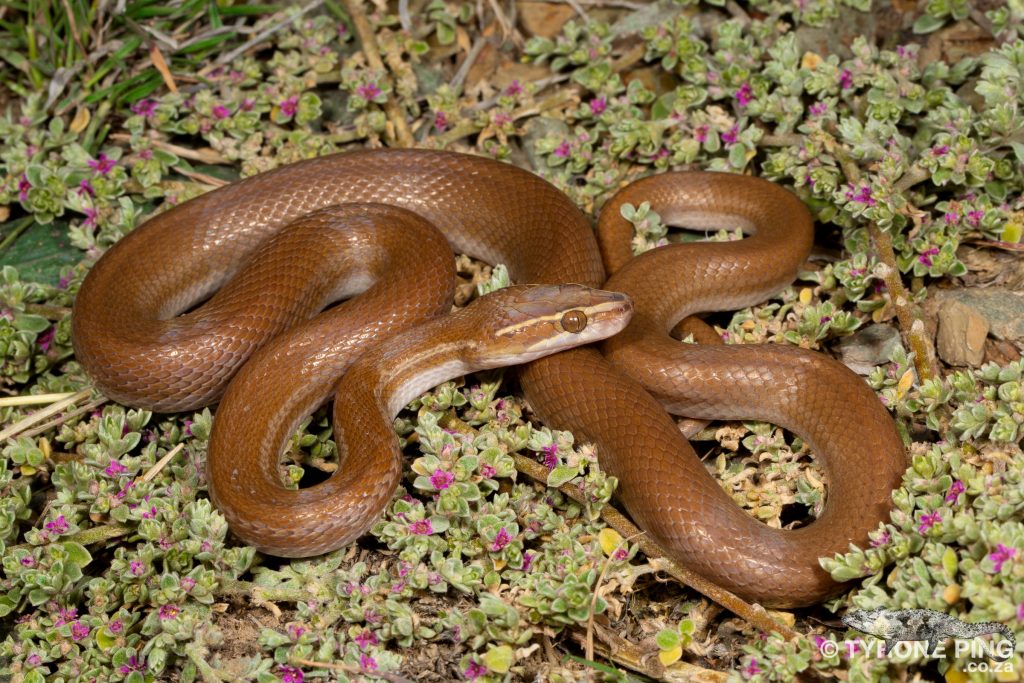
Distinct White Stripes on either side of the head.
Aurora House Snake (Lamprophis aurora) – Harmless
In stark contrast to the Brown House Snake the Aurora House Snake is one of the most exquisite looking harmless snakes in the country. Favouring grasslands and fynbos these snakes are abundant in the Western Cape. Feeding mainly on small lizards, nesting rodents, frogs and on occasion fledgling birds. A shy snake often not exceeding 60cm reluctant to beet although will emit a foul-smelling musk when handled.
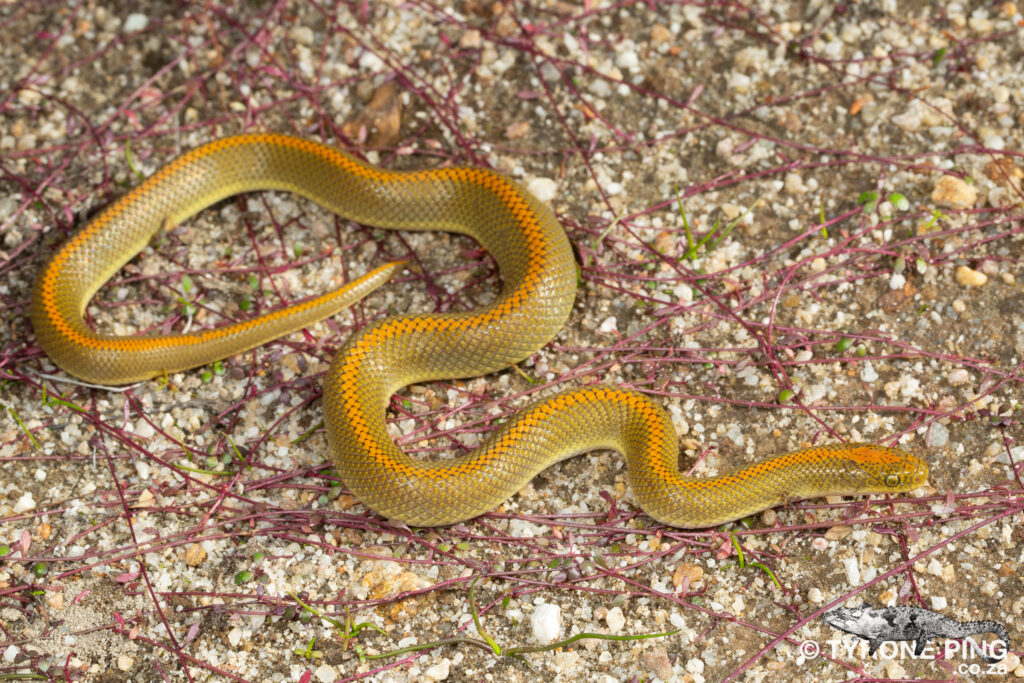
Beautiful green with orange dorsal stripe.
Common Slug Eater (Duberria lutrix) – Non venomous.
Another widespread species which favour damp localities and suburban gardens where it hunts slugs and snails. A real benefit to any budding horticulturist. Small snake soften not exceeding 30/40cm, they can be found under logs/stones beneath pot plants and in and around compost heaps where their prey occur. A rather variable and attractive looking snake in some parts and drab and nondescript in others. Easily distinguishable by its small head and stocky body. When threatened these snakes will emit a foul smelling musk and may roll up into a tight spiral as part of their defensive posture.
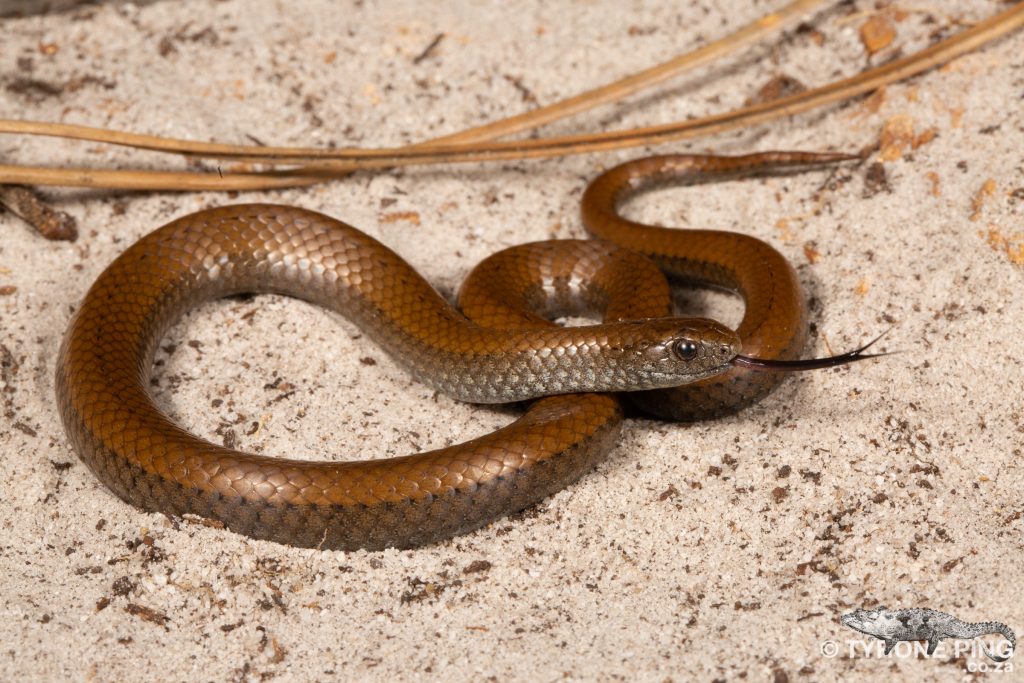
Slug Eater showing the Two tone variation.
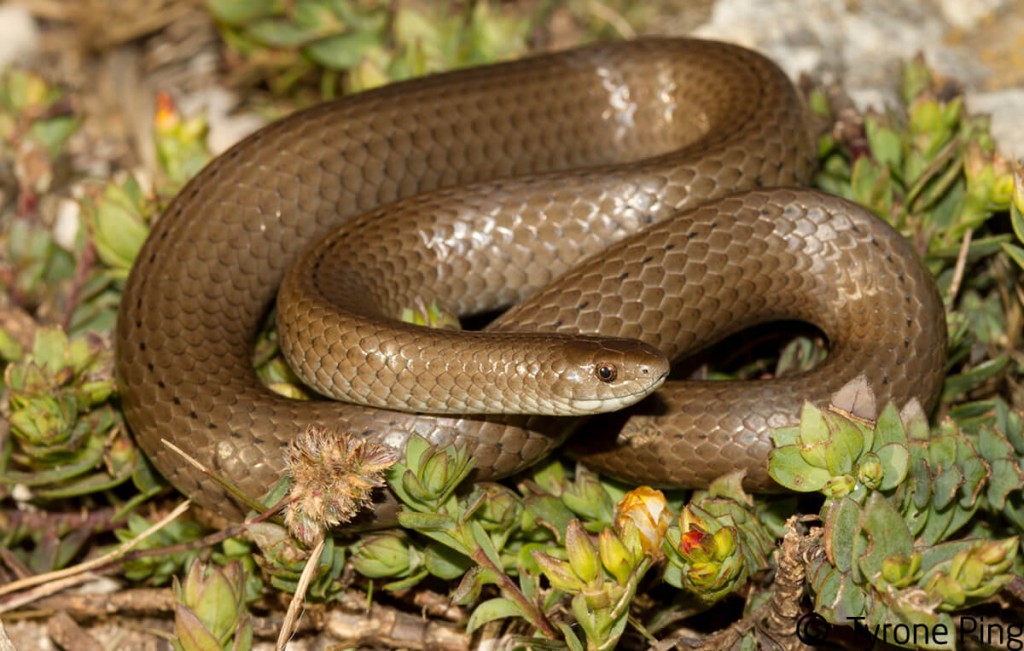
The pale uniform variation with dotted line down the spine.
Olive Snake (Lycodonomorphus inornatus) – Harmless
Previously called the Olive House Snake these snakes have since been renamed and are part of the Lycodonomorphus genus which includes the Brown Water Snake, Dusky Bellied Water Snake and the uncommon Floodplain Water Snake here in South Africa.
A variable species which can range in colour from dark olive, light olive, olive green, almost pitch black and light brown. A snake that favours damp localities and can often be found under logs, stones and other debris along rivers and the edges of forests. A powerful constrictor these snakes can attain an impressive length and girth of close on 1.3 m in some cases. An opportunistic feeder and will take, rodents, frogs, lizards, birds and often other snakes.
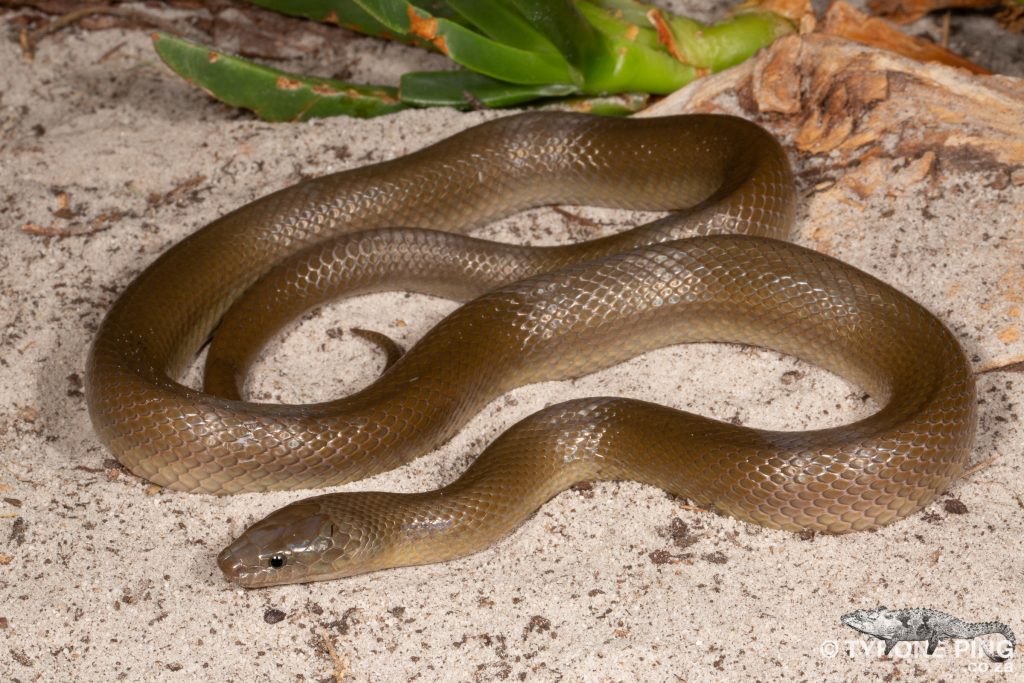
Beautiful colours of the Olive Snake
Brown Water Snake (Lycodonomorphus rufulus)- Harmless
A relatively small snake, the Brown Water Snake averages around 60cm and is a shy, nocturnal, semi-aquatic snake. They swim well and will often catch prey in water. They are powerful constrictors that readily feed on frogs, tadpoles, small fish, and occasionally rodents or nestling birds. They can often be found in suburban gardens at night, actively hunting near fish ponds; and, uncovered during garden cleanup operations while sheltering under rubble and rotting logs.

Rich colours of the Brown Water Snake
Delalande’s beaked blind snake (Rhinotyphlops lalandei) – Harmless
These slender snakes lack a distinctive head and tail and may easily be confused. A key feature in distinguishing this species from the Bibron’s Blind snake is a sharply angled rostral scale which comes to a sharp edge on the snout, the tail ends in a short sharp terminal spine which when handled typically presses into its aggressor giving the illusion of being bitten. These snakes spend their time underground, beneath rocks and logs where they feed on ant eggs and their larvae so are not well equipped to bite.
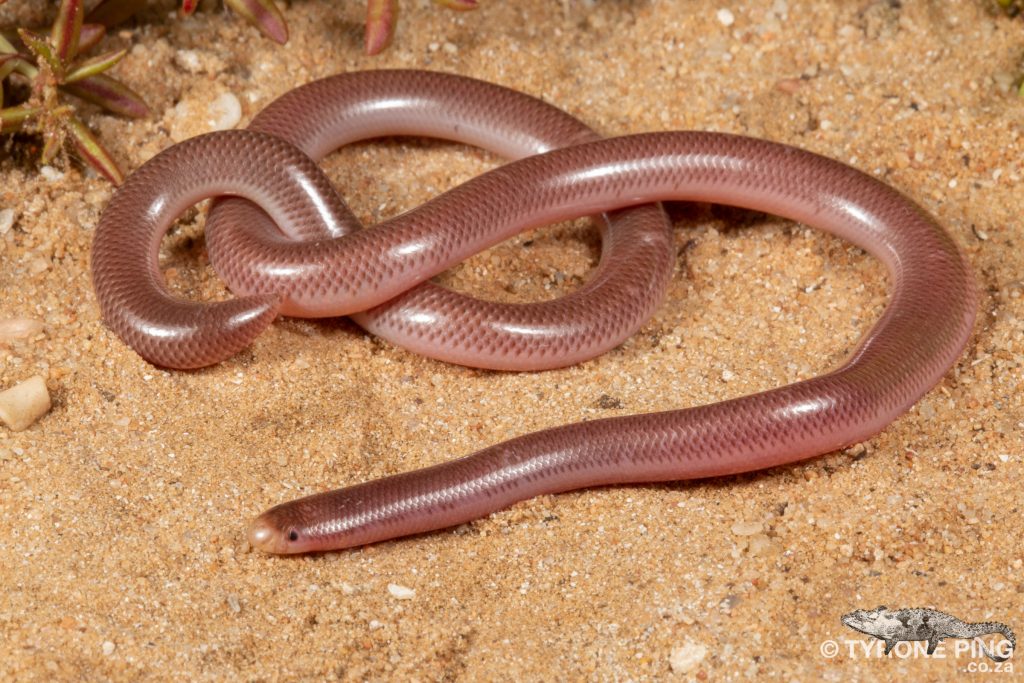
Almost worm looking body of the Delalande’s beaked Blind Snake
Black Thread Snake (Leptotyphlops nigricans) – Harmless
These harmless thread snakes are often mistaken for worms and may be seen whilst gardening, moving rocks and pot-plants or sheltering under logs in moist sandy soils. They are virtually blind and when come to the surface wriggle furiously across the soil until they are able to dig down and escape the bright sunlight.
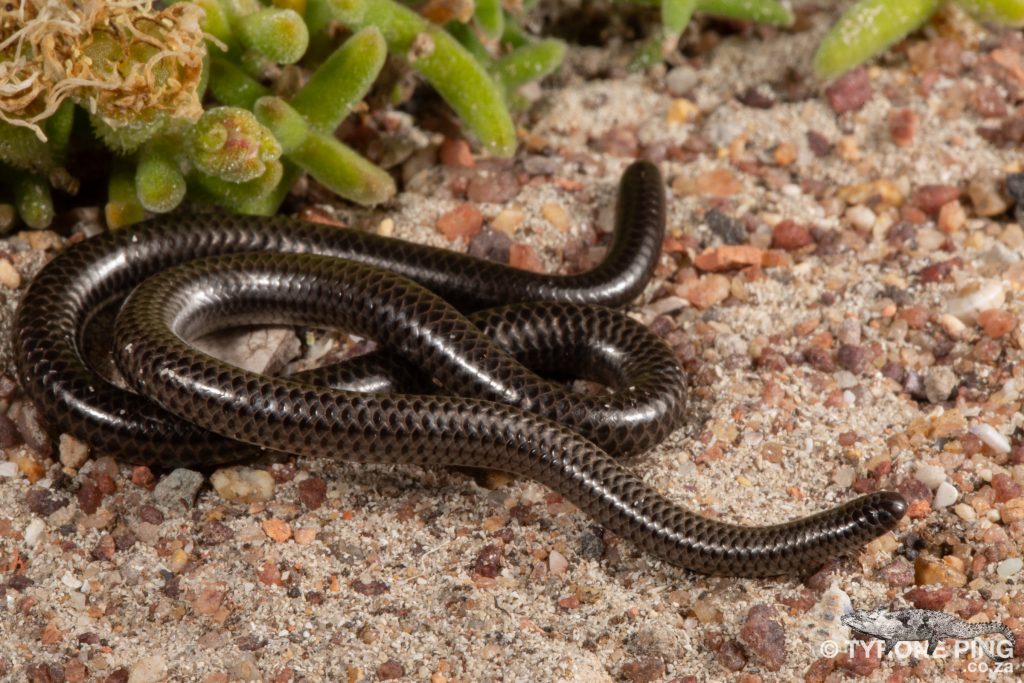
The nondescript Cape or Black Thread Snake.
LIZARDS CONFUSED WITH SNAKES
Cape Legless Skink (Acontias meleagris)
Although not a snake at all – these small fossorial legless lizards (usually not exceeding 350m) are often confused with snakes at a glance. On closer inspection you will notice they moveable eyelids, shiny smooth scales and a distinct hard “beak” which all snakes lack. The Cape Legless Skink is commonly found under rocks, logs, amongst loose sandy soils and compost heaps.
They are totally harmless and are preyed upon by a number of small mammals, birds and other reptiles.
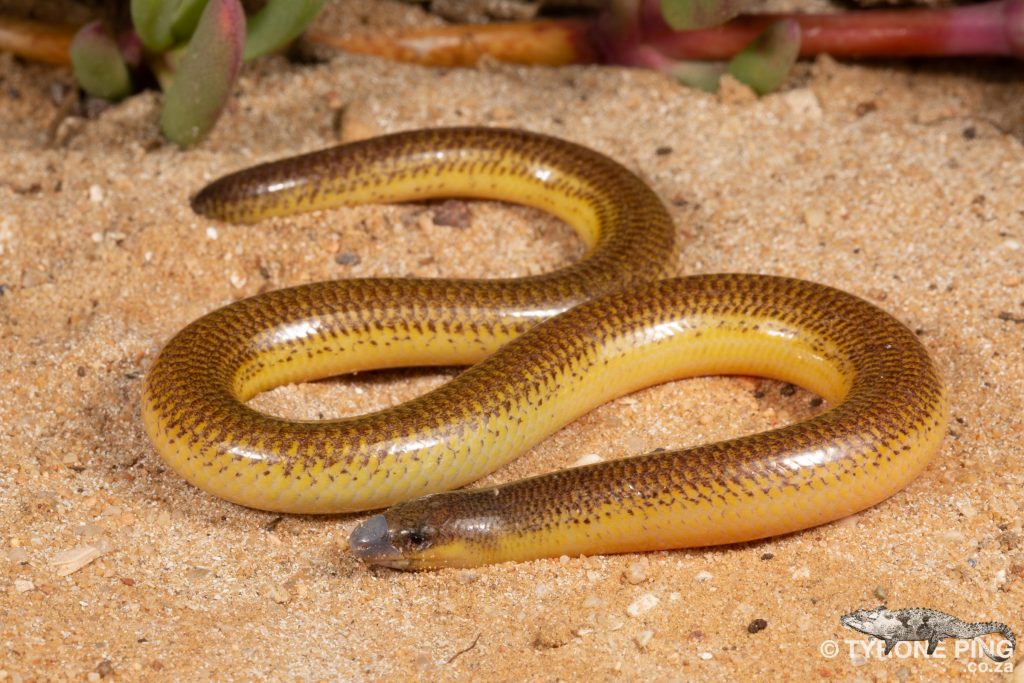
The common uniform yellow with darker upper variety of the Cape Legless Skink
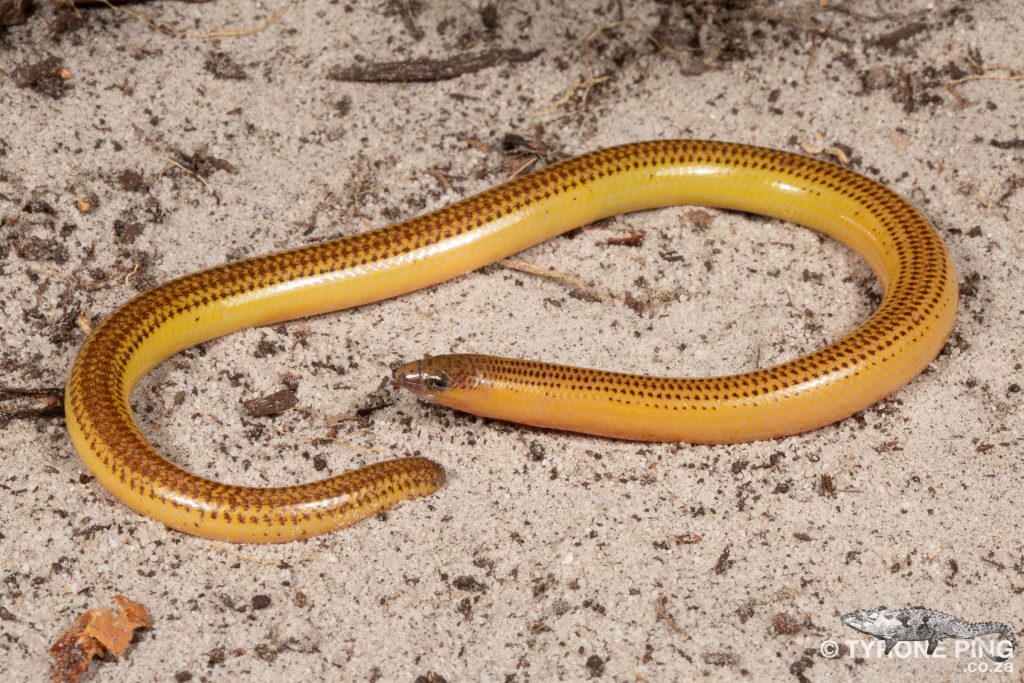
Brighter yellow of the Cape Legless Skink
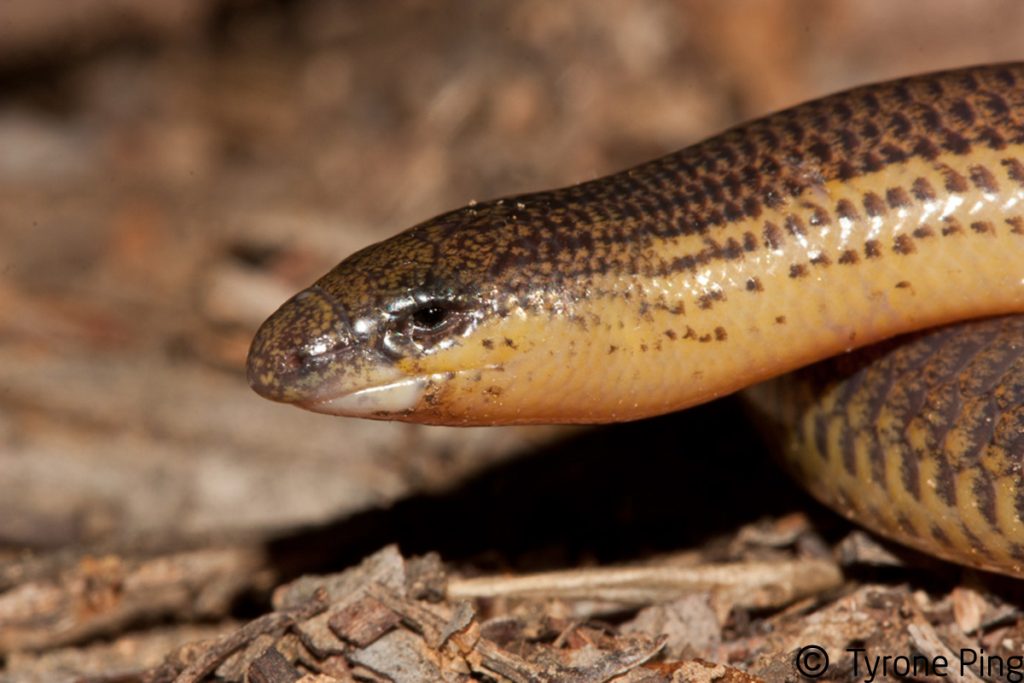
Close up showing the Cape Legless Skink
LIZARDS CONFUSED WITH SNAKES
Cape Grass Lizard (Chamaesaura anguina)
An unusual looking lizard with a long serpentine body that resembles a snake, with the exception of having four small legs as well as eyes which can blink (snakes do not have moveable eyelids). These lizards are quite common and widespread across much of the mountainous regions of the Cape although due to their secretive nature and habits of preferring long dense grass amongst the Fynbos they are seldom seen, unless crossing footpaths or after an area has been burnt.
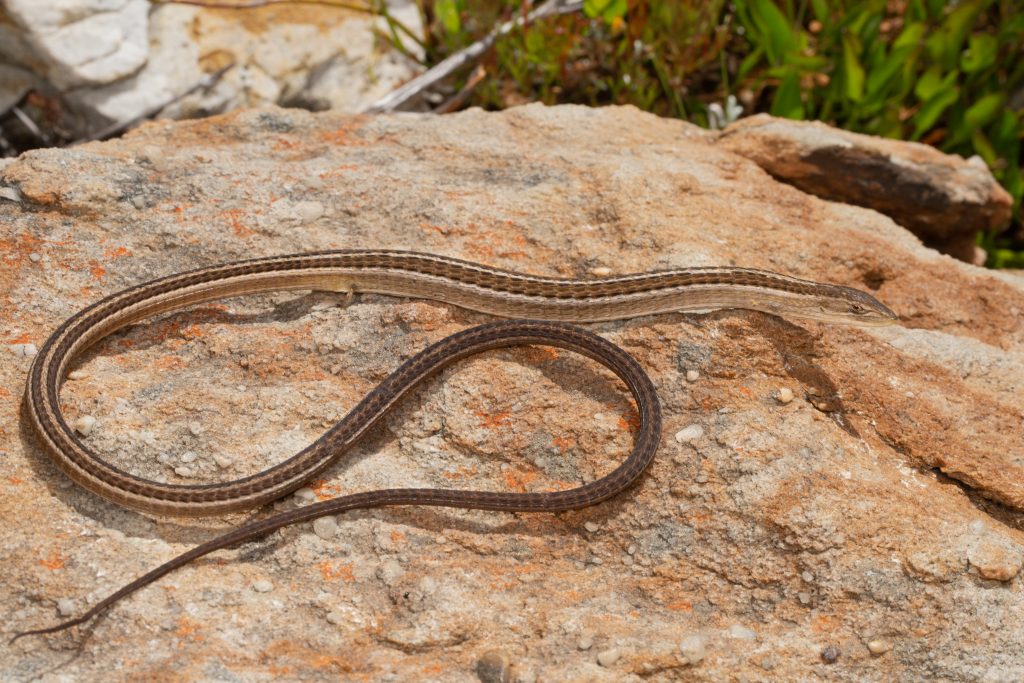
Cape Grass Lizards are typically straw coloured with a dark band/stripe down the back.
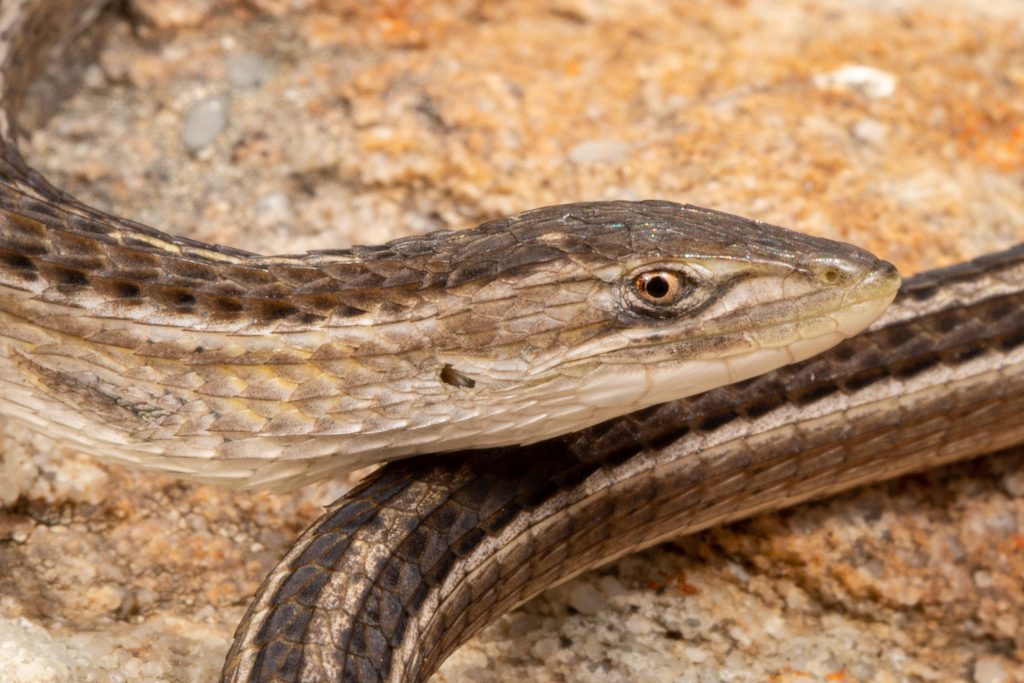
Head showing eyes and ear just behind the eyes.
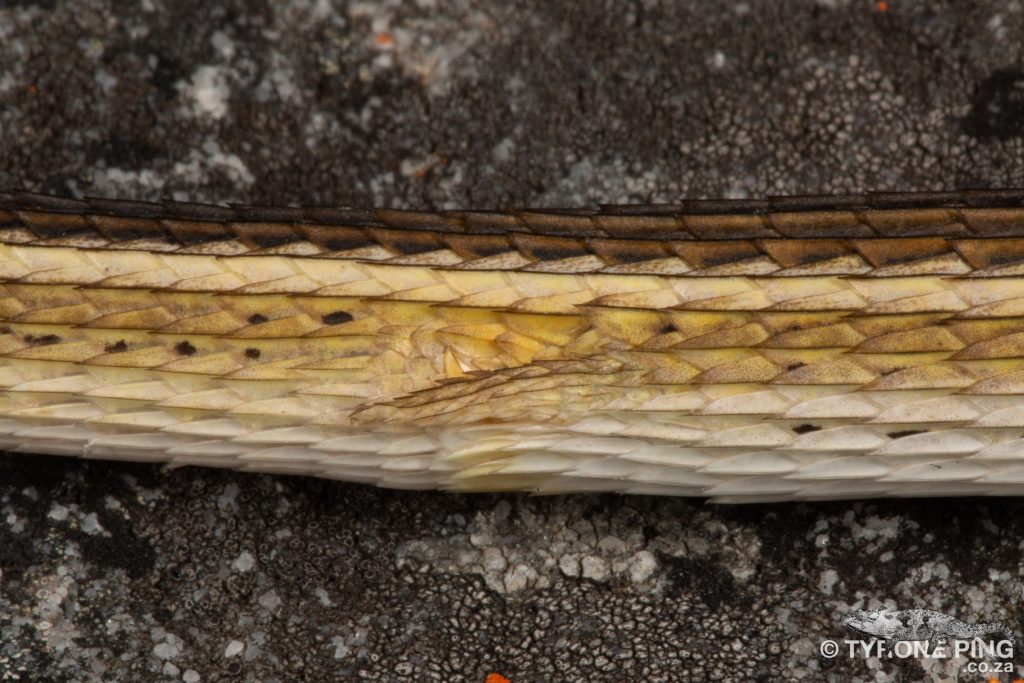
Limbs of the Cape Grass Lizard
Snakes in Cape Town are a part of the everyday day, Although many of these snakes are harmless there are several venomous snakes that need to be treated with caution and if encountered given a wide birth or have a professional snake removed safely contain the snake and be relocated.
To learn more about the Snake & Other Reptiles of Cape Town
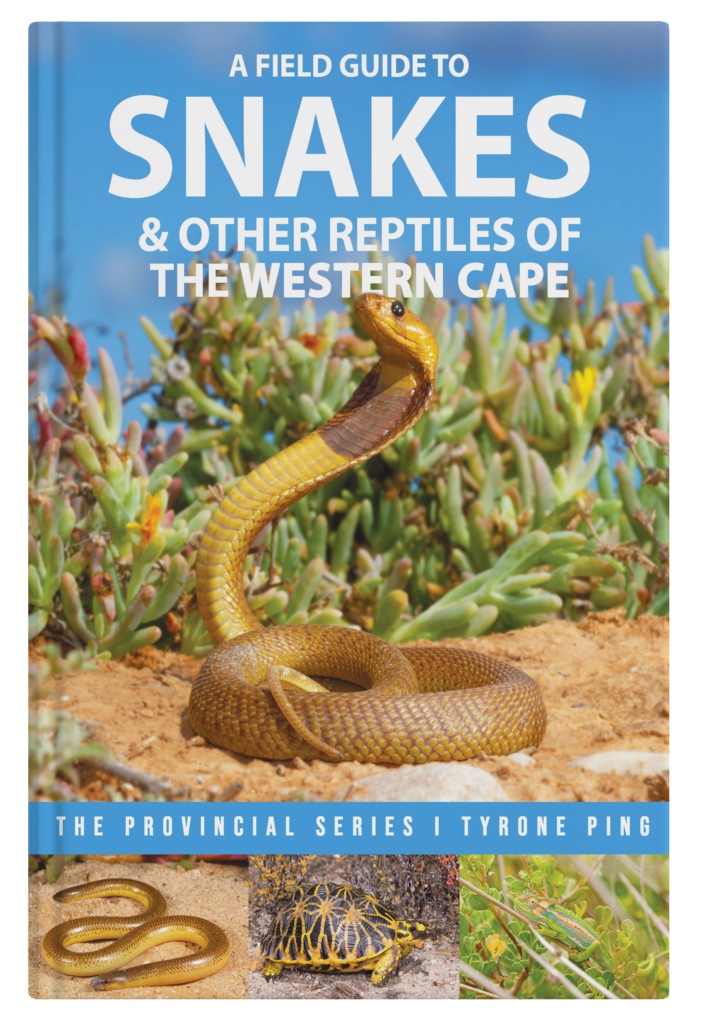
SNAKE REMOVAL IN CAPE TOWN – TYRONE PING 0844922542
For more information on the snakes in South Africa be sure to visit this link.
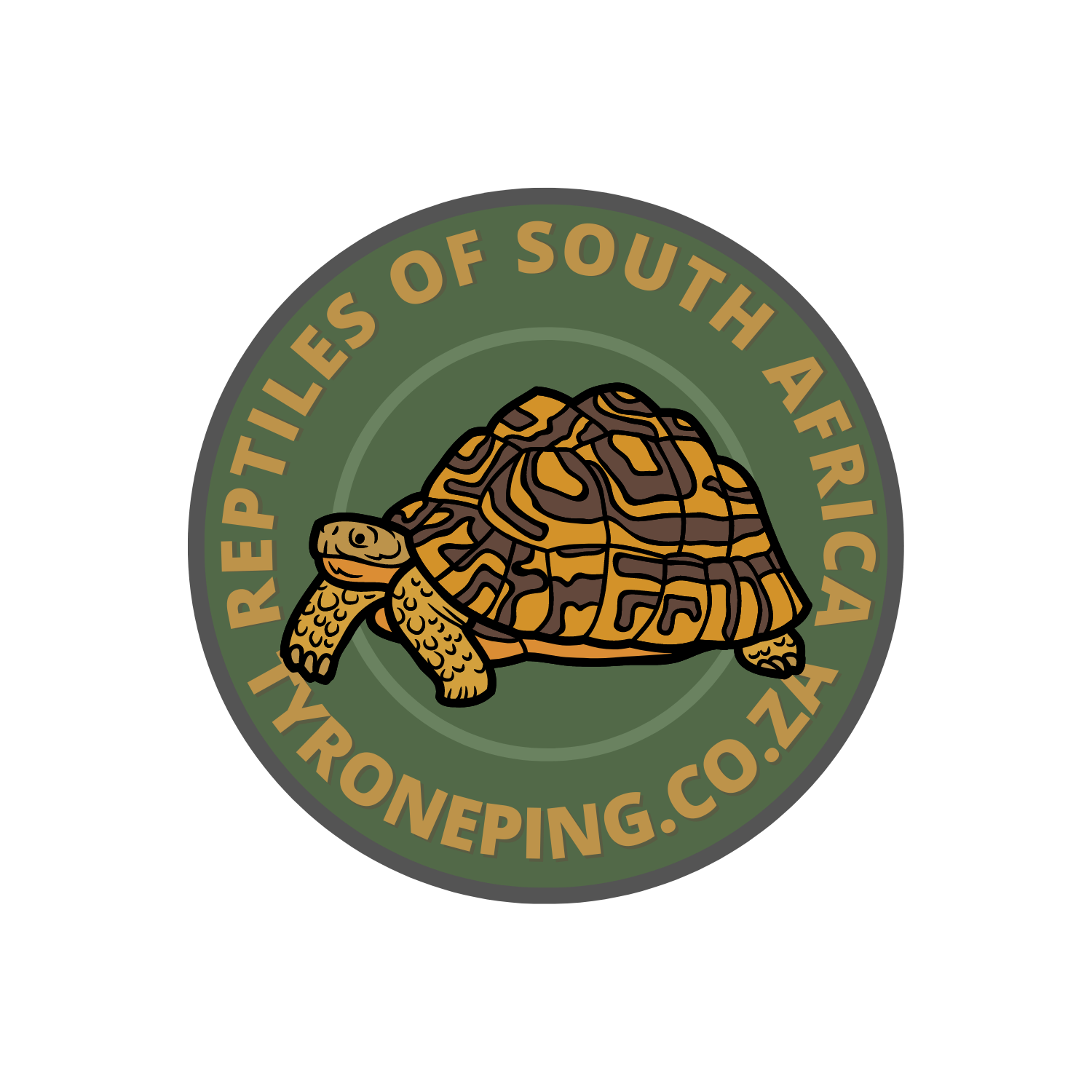
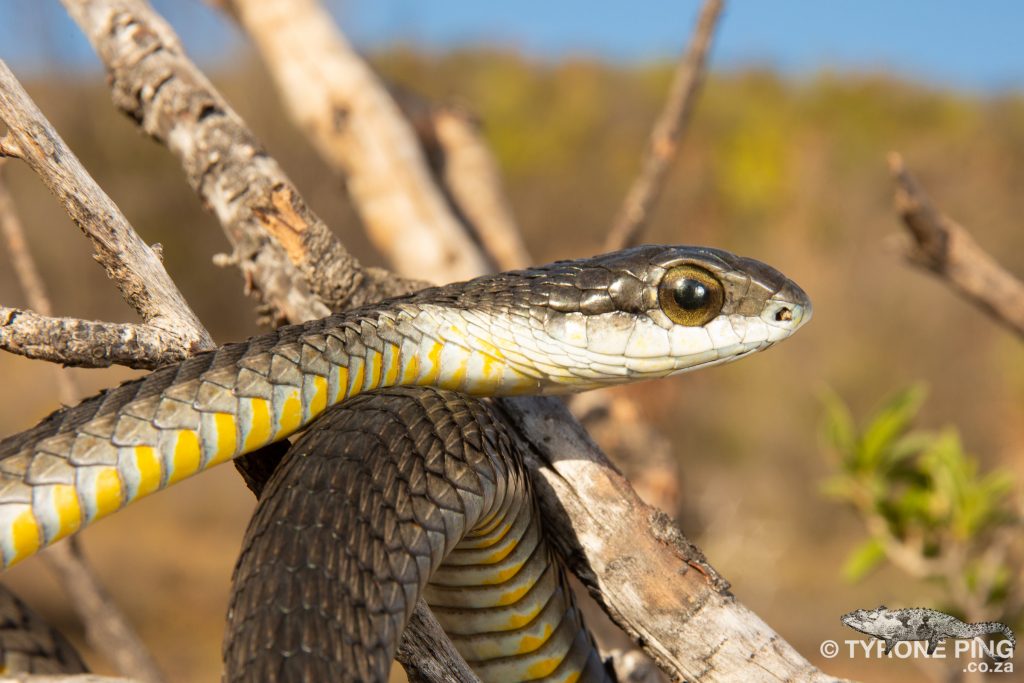
We live in a retirement village in Noordhoek. Garden prunings, etc are gather to make compost. Would dangerous snakes often be found in such heaps assuming there are no rats around?
Generally compost heaps are goo places for inspects, which in turn bring lizards, frogs and can attract snakes. In Noordhoek snakes like Boomslang, Puff Adders and Cape Cobras are very common.
I got a snake looks like a slug eater. But got red under mouth, brown body, big eyes and underneath yellow fading red small snake.. What can it be
Thanks Werner, we did confirm a uniform Cross Marked Grass Snake.
This is very interesting and informative. I’m terrified of snakes but I love reading about them and watching them.
Thanks for your great feedback!
i found a wormlike snake in our home. light brown on top , whitish belly , black head ( not a clear head) approximately 15 cm long. What is it?
thx
Hi Neil, if you have a photo you can share it with me on contact@tyroneping.co.za
Difficult to make out your description without a photo.
Thanks.
Hi There
We live in Zeekoeivlei, close to Rondevlei reserve. What snakes are commonly found around here?
Hi Tauhaar,
Common snakes in the area include; Cape Cobra, Puff Adder, Mole Snake, Brown Water Snake, Common Slug Eater, Olive Snakes and Aurora House Snakes. Hope this helps!
Hi,
I have a small Olive house snake.
What can I give it to eat since frogs and lizards are to big?
If it is a wild snake best release it. Small Olive snakes will feed on small frogs, lizards and young rodents.
Do you ever take people on herping trips? I am so keen to go but really don’t know anyone who does that here. I have done some venomous handling and hike a lot but have never been on one with an expert.
Not typically, as unfortunately many people have ill intensions to collect the reptiles unfortunately. Once shown where these particualr animals are the locations are targeted. Where abouts are you located?
Live out in Hermanus. Spend a lot of time in the mountains looking for and photographing/documenting fynbos flowers, especially threatened/endangered species. Only ever glimpsed snakes on my trips. The funniest being recently when I think I saw a low flying Olive Snake in Fernkloof nature reserve. I say low flying because I startled it and it took off so fast that it parted the grass like a in a cartoon. Your photos are absolutely fantastic. Thanks for the info. I’ll keep looking and maybe one day a snake will stay still long enough to get a shot. Till then I’ll stick to rare flowers.
Thanks Julian, snakes sure will make a quick exit when startled for the most part anyway!
Some greta species of reptiles within Fernkloof a lovely reserve.
In Kalk Bay, have a 15cm snake (black with red bands, not stripes) lives in garage door frame. Do you know what it is? Thank you.
Hi, from your description it would be a Spotted Harlequin Snake – they are venomous although not dangerous.
Hi found the snake about 20cm long brownish and whitish belly under old rain coat abandoned in my yard, what is it?
Mj
From the description it sounds much like a Common Slug Eater – do those reference images look familair?
From the description it sounds like a Common SLug Eater do those reference images look consistent with what you’ve seen?
Thank you for the article and beautiful images. We have come across 3 different snakes in the last couple of months (Rhombic Egg Eater, Rhombic Grass Snake and the Aurora House Snake) and each time this article with its wonderful photos were all we needed to identify the snakes. Thanks for sharing!
I’m on the mountainside off Boyes Drive and saw the tail end of a snake – appeared large and green. I often see small mole snakes and once had a very large mole snake removed to the mountain. Can mole snakes have a green hue? If not, any idea what this snake might be.
Hi Jenny, from your description most likely a non-venomous Olive Snake.
Hi, can you please advise what snakes can be found in the Parklands and Sunningdale areas?
Hi.
Mole Snakes
Cape Cobra
Boomslang (uncommon)
Aurora House Snake
Brown Water Snake would be the most commonly encountered.
Thanks Tyrone,
Very useful. Think I’ve got a common slug eater in my kitchen.
Awesome – great to hear it was useful!
Hi, Yesterday in Cape Point Nature reserve having some lunch, the birds warned me of an approaching snake. I stood up, to see and so did the snake. Slender, about 1.2 mt +, black with white underneath, no hood. At first I thought it was a juvenile Mole snake, but never seen white underneath.
Any suggestion what I saw? Thanks
Hi Cornelis. Mole snakes are exceptionally common in the area and the only dark snake that is of that size other than a Cape Cobra. Some individuals can have paler bellies as you described.
Hi! What snakes can be found in Kuilsriver and in the Garden in Cape Town?
Mole snakes, Cape Cobra, Aroura House Snake, Brown Water Snake, Egg Eater and a few others.
Thank You
Highly Informative